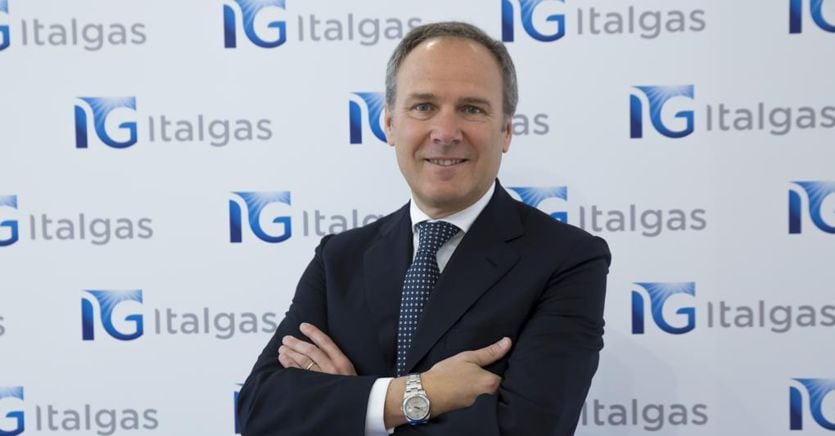«The course to be followed against expensive energy is a multiplicity of interventions that make it possible to reduce Europe’s dependence on gas imports. And the road, which also helps to solve most of the problems related to the waste chain, is the one that leads to biomethane: a consolidated technological solution already available and for which the European Commission has estimated a potential between 1,150 and 1,422 terawatt-hours l year, equal to 25-30% of the current gas consumption of the Old Continent ». At the end of the two-year presidency of GD4S (Gas Distributors for Sustainability), the association of European gas distributors, Paolo Gallo, CEO of Italgas, points out a possible way by looking at the surge in gas prices that has driven up bills throughout Europe, including Italy, and calls for acceleration on green gas and the integration between electricity and gas systems (the so-called sector coupling) to ensure the necessary flexibility to the system. With an eye to those countries that are already moving in this direction.
«In France a lot is being invested in biomethane. Suffice it to say that Grdf (Gaz Réseau Distribution France), the main transalpine gas distributor, already boasts 315 plants connected to its network and there are 1,180 projects under authorization. And this thanks to the considerable push guaranteed by the government which has favored the development of a widespread competence to manage the injections of biomethane into the network ». With the result that more than 90% of the plants are connected to the distribution network. «It is an intuitive fact – clarifies the CEO – because the biomethane plant is basically built in the vicinity of inhabited centers, especially if it exploits the waste deriving from agricultural production. And therefore it is much more probable that in those areas there will be a gas distribution network to connect to ».
The other model indicated by Gallo is Portugal where the country’s main gas distributor, Ggnd (Galp Gás Natural Distribuição), is experimenting with the distribution of a mixture of natural gas and hydrogen through its network to residential, tertiary and industrial customers. . In the initial phase of the project, 2% of hydrogen will be injected into the natural gas network, and then up to a maximum of 20% over 2 years. “Our counterparts expect overproduction of electricity from renewable sources in the coming years at a relatively low price that could therefore be used for the production of green hydrogen and are gearing up to exploit this possibility”.
Two obvious examples, therefore, which show how the response to the gas crisis must also be sought by promoting medium-long term interventions, favored and accompanied by the Community institutions. “If there were a more stringent indication at the European level on the production of biomethane, this would help individual countries to accelerate on this front”. At the moment, this is where the coverage of just 5% of the European Union’s gas demand comes from, but the prospects are enormous if we only consider that, from 2018 to 2020, the plants have almost doubled to reach the quota of 729 units in 19 countries. And in Italy the potential is no less: the Italian Biogas Consortium estimates the annual production of biomethane at around 8.5 billion cubic meters that can be reached through the conversion of existing structures and the addition of new installations. Which, as is well known, the Recovery Plan with the approximately 2 billion investments envisaged, also wants to try to push. «Today only a percentage of agricultural waste between 10 and 20% is treated to produce biogas and biomethane. This means that there is still a considerable margin of development possible ».
It is clear, however, that an effective push is needed both from individual governments and from Brussels. Where, not surprisingly, in the two years of Gallo’s presidency, GD4S – now under the helm of the Spanish Narcis De Carreras, CEO of Nedgia -, has conquered more and more space becoming “a serious and reliable interlocutor of the European Commission”, he adds. Gallo, and has activated continuous collaborations with other associations of gas distributors (Eurogas, Geode, Cedec): “In this way we have brought the voice of over 90% of gas distributors from all over Europe to Brussels and we have done so with a common vision of the strategic role of gas networks in the energy transition and of the importance of cooperation between the electricity and gas sectors “, continues the CEO. In short, not just a dimensional leap. Also supported by the turning point desired by the top manager within Italgas in the name of an ever greater push towards digitalization. A turning point that Gallo recounted in a book, fresh off the press, “Diario di volo”, and which thus entered, together with the theme of the control and reduction of fugitive methane emissions from distribution networks – another front on which Italgas is avant-garde -, among the priorities that «by now all European distributors have put at the top of their to-do list – he concludes -. These are the two topics that every operator must face in a virtuous and courageous way to promote the transformation of our sector ».
